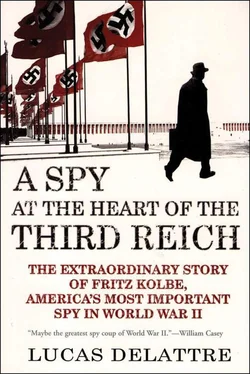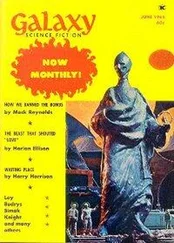Allen Dulles had very good informants in Geneva. One of his most interesting contacts was the Dutchman Willem A. Visser’t Hooft, general secretary of the Ecumenical Council of Churches. He was also well acquainted with William Rappard, former rector of the University of Geneva, who had also represented Switzerland at the League of Nations. Through one or another of his friends, he entered into contact with Adam von Trott zu Solz in January 1943. This young and brilliant German diplomat, an eminent member of the Kreisau Circle, wished to obtain American aid for the underground opposition movements in Germany. “Support us or we will be tempted to turn to the Soviets,” was the substance of his message in a conversation on Swiss territory with one of Dulles’s close collaborators. Allen Dulles had instructions to promise nothing to anyone, especially since the policy defined by Churchill and Roosevelt was the “unconditional surrender” of Germany (a formulation that Dulles personally considered a “catastrophe” because it stifled any impulse toward resistance in Germany). The German diplomat thus left empty-handed.
At about the same time (mid-January 1943), Dulles was visited by Prince Maximilien Egon Hohenlohe von Langenberg, one of his old acquaintances from the time of the First World War. Prince Hohenlohe was a German aristocrat with roots in Sudetenland, who divided his time among Germany, Spain, and Mexico—where his wife, a Spanish marquise, owned large estates. He himself had a passport from Liechtenstein, a neutral country like Switzerland, which enabled him to travel almost everywhere in the world. He was in contact with very high officials throughout Europe (the Aga Khan was among his friends), but especially in Berlin, and notably with Heinrich Himmler. “Help the SS; they are the only ones who can protect Germany against communism and maintain order in the country,” Hohenlohe had told Dulles. The prince encouraged a simple solution: elimination of Hitler, a seizure of power by the SS, a separate peace with the West, and a united front of Western democracies against the Russians. No one knows precisely what Dulles answered, but it seems that the American spymaster left all doors open in order to maintain contact for the future.
It was not easy for Dulles to communicate with Washington, particularly with complete security. Since the end of the unoccupied zone in France, Switzerland had literally been cut off from the rest of the world. Diplomatic mail was suspended. All connections with the outside had to be by telegraph or telephone. Telephones were of course tapped, and nothing confidential could be said over that channel. For telegraphy, a very secure system of encryption had to be used because the only lines available were those of the Swiss postal and telecommunications service. As a result, this work required two full-time employees out of the small OSS Bern crew, which numbered only about fifteen. Dulles and his colleagues were not exceedingly cautious. As a method of encryption, they used simple transpositions of letters, a technique as old as the hills that consisted of changing the order of letters by constructing more or less sophisticated anagrams.
In the spring of 1943, Allen Dulles learned that the Germans had succeeded in deciphering a series of dispatches that he had sent from Bern to Washington. That day, he had used—for convenience—the coding system of the State Department, normally used by the American legation in Bern. This method was even less secure than that of the OSS. This technical failure might have been very costly to the Americans if the leak had concerned sensitive information.
From that day onward, Dulles was encouraged to strengthen the security of his communications. He multiplied encryption keys by using systems with double or triple transpositions. This did not save his system from remaining rather rudimentary in comparison to the complexity of the German Enigma code.
The man who had informed Dulles of the leak was a German. Six feet five inches tall, myopic (the lenses of his glasses were as thick as bottles), his appearance was not very prepossessing. “He looks like a Latin teacher,” thought Dulles when he met him for the first time during the first few weeks of 1943. This was Hans-Bernd Gisevius, vice-consul of the Reich in Zurich, but above all member of the Abwehr, the military intelligence service. After carrying out a long and very meticulous investigation of this obscure figure, Dulles had agreed to enter into contact with him.
Gisevius had long been a friend of Hjalmar Schacht, former economics minister of the Reich. He was also close to Admiral Canaris and to General Oster, the mysterious heads of the Abwehr. Finally, he said that he had close contacts with the Protestant circles opposed to the regime. Gisevius had a Nazi past and had even been a member of the Gestapo in 1933 and 1934. Having gradually become an opponent of the regime, he had a mission to make contact with the Allies for the purpose of obtaining support for the plots that were being hatched against Hitler. The English were suspicious of him and had refused to take him seriously. But by revealing to the Americans a technical secret of great importance, Gisevius had given them a token of his good faith. He soon became known as “Tiny,” as a joke on his great height. He became “512” in the internal nomenclature of the OSS.
Dulles and Gisevius met fairly often, at night after curfew, in Bern or Zurich. Gisevius was (along with a few others) one of the first to reveal to Dulles the existence of long-range German missiles designed to be fired on London. In February 1943, he explained that these rockets were being built “somewhere in Pomerania.” In June, Dulles learned from another source that this “somewhere” was in fact Peenemünde, a Baltic Sea resort. The information provided by Gisevius was hence of the highest quality. Thanks to him, Dulles was also able to transmit to Washington precise details about the state of mind of the German population and the balance of power inside the Nazi regime. Gradually, the head of the American secret services in Switzerland was beginning to become a serious competitor of his British colleagues.
In Washington, however, Dulles did not have an excellent reputation. In late April 1943, the head of American intelligence in Switzerland received the following telegram from his superiors in the OSS:
It has been requested of us to inform you that “all news from Bern these days is being discounted 100% by the War Department.” It is suggested that Switzerland is an ideal location for plants, tendentious intelligence and peace feelers but no details are given. As our duty requires we have passed on the above information. However, we restate our satisfaction that you are the one through whom our Swiss reports come and we believe in your ability to distinguish good intelligence from bad with utmost confidence.
Berlin, mid-August 1943
Sunday, August 15, 1943, at around seven in the evening, Fritz Kolbe went to the Anhalter Bahnhof in Berlin. He was to take the 8:20 train for Basel. Fritz arrived early. The distance between the Foreign Ministry and the station was not great (it took only a half hour walking toward the south). The city was bathed in soft summer light. The shadows of the few passersby stretched out on the ground. This neighborhood of government offices at the end of the day seemed immobile and curiously calm. After leaving his Kurfürstendamm apartment, Fritz had stopped at Wilhelmstrasse to pick up the files that had to be turned over to the German legation in Switzerland. The assignment was a routine operation: The transmission of diplomatic mail from Berlin to Bern took place twice a week, leaving Berlin on Sunday and Wednesday evenings. The task was rotated among mid-level officials and never given to a woman.
Читать дальше











